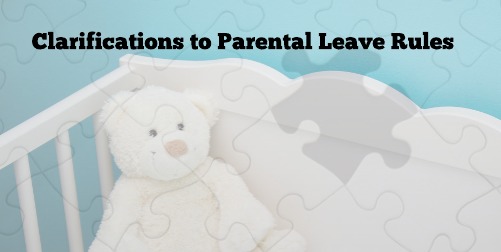OPM clarifies parental leave rules, including eligibility for certain agencies and their employees.
Paid parental leave for federal employees, which goes into effect on October 1st of this year, is a welcomed new benefit to many workers on the government’s payroll. For most feds who have put in at least 12 months of service, they will soon have access to the new type of paid time off. Earlier this month, OPM clarified a few technicalities regarding the 12 weeks of paid leave available to new parents in the federal workforce. For starters, the 12 weeks will not be for anything other than “parental purposes,” as strictly defined by the law. The definition of what activities were allowable had previously been more ambiguously stated.
The federal agency tasked with managing the government’s personnel also solidified many rules pertaining to eligibility:
-Paid parental leave is available for births, adoptions, and foster placements that occur on or after October 1st, 2020. The 12 weeks stipulated in the 2019 National Defense Authorization Act (NDAA) can be used at any point as long as the timeframe is within 12 months of the qualifying birth, adoption, or foster care placement.
-USPS workers are not able to take advantage of this new paid leave benefit, whereas SEC and FDIC employees are. The new law will supersede those two agencies’ already existent six-week paid family leave policies.
-Title 5 workers, other than TSA screeners as their eligibility was explicitly stated in the authorizing legislation, will only be included if their respective agency grants it. Examples of such workers include all FAA employees, all non-screener TSA positions, and ‘Title 38 medical personnel.’ The VA has already said their title 38 feds will be authorized to utilize the leave. Title 38 medical workers represent a portion of healthcare professions at the VA and NIH.
-As for title 38 employees at the DoD, it is still uncertain if they’re eligible or not. The House added language to cover them after the NDAA had been signed by the president. However, the Senate never followed suit and a final decision has yet to be made about adding these employees to the official legislation.
Other clarifications finalized by OPM mentioned exchanges and repercussions. Existing unpaid parental leave admissible through the Family and Medical Leave Act (FMLA), which has already been used, cannot be exchanged into paid parental leave retroactively. Also, the FMLA leave already taken will subtract from the available paid family leave. If three weeks of FMLA leave were used, only 9 weeks of paid parental leave are left. Regarding repercussions, if the new parent decided not to return to work after taking the allotted 12 weeks, they’ll be required to reimburse the government for all FEHB contributions made in the duration of the family leave taken. And lastly, in households where both new parents are feds, each individual will be able to take their own 12 weeks of paid leave.
Until Next Time,

**Written by Benjamin Derge, Financial Planner. The information has been obtained from sources considered reliable but we do not guarantee that the foregoing material is accurate or complete. Any opinions are those of Benjamin Derge and not necessarily those of RJFS or Raymond James. Links are being provided for information purposes only. Expressions of opinion are as of this date and are subject to change without notice. Raymond James is not affiliated with and does not endorse, authorize, or sponsor any of the listed websites or their respective sponsors.

OPM Clarifies New Parental Leave Rule
